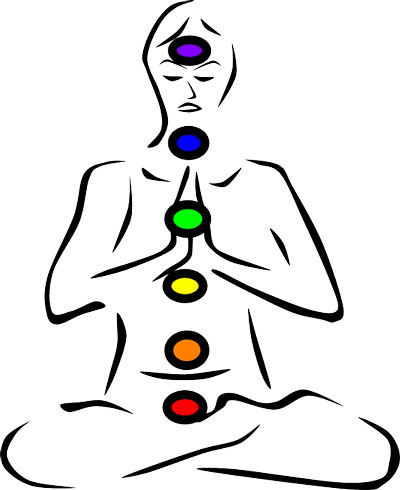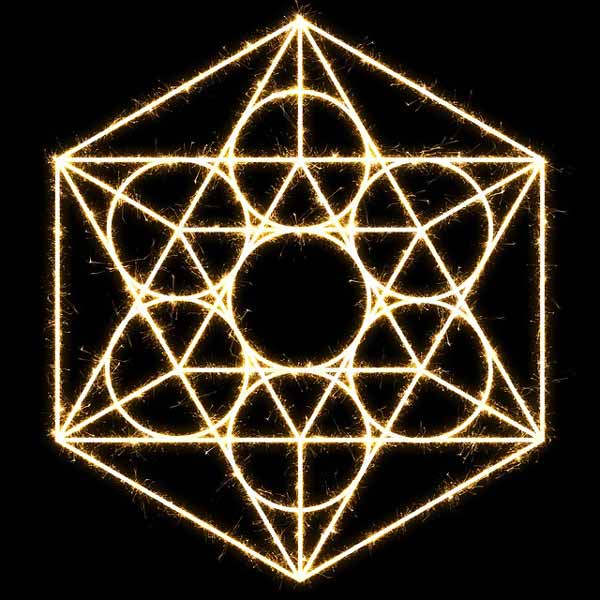There’s a debate among proponents of the ancient frequencies. Most can agree that 440 Hz, the modern standard, should be replaced, but there’s some argument over which frequency should replace it: 432 Hz or 528 Hz.
Supporters of both camps claim their frequency is superior, and it can be hard to figure out which group to agree with; especially when you consider that both tones have historical, scientific, and anecdotal evidence to back them up.
So, which note should you choose? Let’s take a look at what 432 Hz and 528 Hz are, how they’re different, and which one is better.
A Brief Introduction 432 Hz and 528 Hz
If you’re reading over this website, there’s a good chance you’re already familiar with the history and benefits ascribed to 432 Hz and 528 Hz.
But just in case you’re not, let’s have a quick overview of these frequencies: how they have been used and some of the benefits of each.
Here’s what has been discovered about 432 Hz:
- Scientific research has shown it reduces anxiety and lowers blood pressure and heart rate (1).
- Encourages synchronicity between both hemispheres of brain, increasing creativity, insight, and intuition.
- Resonates with the heartbeat of the Earth (Schumann Resonance), at the frequency of 8 Hz.
- Found in the design of ancient sites like the Great Pyramids and Stone Henge.
- Used in the instruments of the ancient Greeks, Egyptians, Tibetan monks, and Stradivarius violins.
- Used in the music of Mozart, Verdi, and other famous composers.
- Known as “scientific tuning” because of its mathematical consistency and endorsed by many scientists of past centuries.
Here’s what has been discovered about 528 Hz:
- One of the original 6 Solfeggio frequencies.
- Known as the “love” frequency and “miracle” tone for its influence on wellbeing.
- Scientific study has shown it increases UV light absorption in DNA (2).
- The frequency is found in nature in grass/chlorophyll, oxygen, rainbows, sun rays, and the buzzing of bees.
- Purported to heal DNA by removing impurities that cause sickness and disease.
- One of a number of frequencies used to clean oil from the ocean during a BP spill in 2010.
- Used as the tuning frequency in the song “Imagine” by John Lennon.

432 Hz vs. 528 Hz: How They Are Different
One of, if not the, most important voices in bringing 528 Hz and the Solfeggio frequencies into the modern consciousness is Dr. Leonard Horowitz.
What does he have to say about the differences between 432 Hz and 528 Hz?
Dr. Horowitz points out that both frequencies are in harmony with sacred geometry and nature:
I know of no inherent conflict between the vibrations of 528Hz and 432Hz. Based on the brilliant mathematical analyses performed by Victor Showell, 528 and 432 are both sacred geometric measurements that, in my opinion, resonate in harmony with the vast majority of harmonic natural frequencies of universal construction.
However, he goes on to say that 432 has become the yin to 528’s yang, the evil to its good.
528 is clearly all about love, peace, and freedom, and 432 has been selected by agents of fear, war, and spiritual enslavement, to defeat the ‘528LOVERevolution.'
He even accuses the early proponents of 432 Hz of being malicious, dishonest, and possible controlled opposition:
Those people, beginning with Jamie Buturff and Tyler Thurmon, who started the ‘432 Hz Revolution’, and from its inception began to advertise 432 Hz to ‘compete’ unfairly, through consumer fraud and published lies about 528 and the ‘528LOVERevolution’, and thus instigated a hate campaign for no honorable reason, are highly suspect of committing treason against We The People and the ‘Free World’.”
Those are some rather strong words from Dr. Horowitz, and more about a personal grievance with other sound therapy enthusiasts than the benefits of the frequencies.
There certainly are differences between the two, but “good and evil” doesn't come into the equation.
432 Hz
In Pythagorean math, 432 reduces to 9, while 528 reduces to 6. Though different, we see in the Solfeggio frequencies the harmonization between 6 and 9 (along with 3).
There are more significant differences, of course, namely that 432 Hz resonates with Earth’s natural frequency.
We know this because of the Schumann Resonance, but it can also be shown using mathematical formulas, as discovered by Swiss mathematician and musicologist, Hans Cousto.
The time it takes the planet to complete a full orbit around the sun is 365.25 days. If we multiply this by the number of hours in a day, number of minutes in an hour, and number of seconds in a minute, we come to 3.168809 × 10-8 cycles per second.
1 cycle / (365.25 x 24 x 60 x 60) = 3.168809 × 10-8
If we convert this number to a frequency, it’d be much too low for the human ear to audibly detect.
But if we apply the law of octaves – which states that an octave of a frequency can be used in the same way as the original frequency – we eventually come to 136.09 Hz at the 32nd octave.
On an equal temperament scale with C at 136 Hz, A is at 432 Hz.
In short, 432 Hz resonates with the very vibrations of our planet, which is one of the reasons it’s so beneficial.
528 Hz
However, 528 Hz resonates with a planet as well; just not our own.
If we apply the same method as above, we find that 528 Hz is in tune with the harmonics of Saturn.
Now, these two planets have an important link, but they also have some key differences.
For instance, esoteric science does not consider Earth a sacred planet, but Saturn is.
This is easy to make sense of if we consider ancient Greek and Roman mythology, where the other planets – like Saturn – were associated with the gods.
Saturn (or Cronus, as the Greeks called him) was the god of time, wealth, and agriculture.
This distinction between non-sacred vs. sacred planets has some practical implications as well: The former seems to have a bigger influence on the average person, while the latter resonate with those of us who are more advanced in consciousness.
From that perspective, it makes sense that someone like Dr. Horowitz, who’s been working in this area for years, would feel more strongly about 528 Hz.
It also makes sense because the majority of people feel a strong connection with 432 Hz, but gravitate towards 528 Hz when their journey deepens, so to speak.
But are these frequencies really so different?

+ Download 432 & 528 Hz music here
432 Hz & 528 Hz: How They Are Similar
Planetary Relations
We established above that 432 Hz and 528 Hz resonate with different planets, Earth and Saturn.
But in esoteric cosmology, there are seven rays which coincide with the seven chakras. Each of these rays, minus the fifth and seventh, transmit through two planets of our solar system.
And which rays do Earth and Saturn relate to? They both transmit the same one, the third ray, which is an example of their deep connection.
And this third ray energy is said to affect our fifth chakra, the Throat Chakra.
This chakra is connected with creativity, communication, and our mental progress from average to advanced. Some thinkers describe its significance with regards to comprehension, understanding, adaptability, and philosophy.
Physiologically, the throat chakra is related to the organs in that region of the body, like the nose, ears, and mouth. It’s also connected to the thyroid and parathyroid glands.
Mathematically Linked
We find a link between 432 Hz and 528 Hz mathematically, too.
As Dr. Horowitz pointed out, Victor Showell has shown that both numbers are important to sacred geometry.
But he’s also proven some specific connection between the two numbers themselves. For example:
- 528 – 432 = 96
- 528 + 432 = 960
Then there’s the Pythagorean math we detailed earlier, which reduces 432 to 9 and 528 to 6.
An expert in electromagnetic technologies, John Keely, has said that vibrations of “thirds, sixths, and ninths, were extraordinarily powerful”. There’s more.
- 432 / (528/432) = 360
Where do we find 360? It’s the degrees of a circle. It’s the number of years in one divine year in Hinduism.
And when Pastor Richard Wurmbrand went through the Bible and counted the number of times “do not fear” was expressed. What was the count? 360.
Let’s keep going:
432 / 528 = 0.81818181…
1 + {432 / 528} = 1.81818181…
528 x 1.81818181… = 960
432 / 1.81818181… = 237.6
237.6 x 10 = 2376
2376 is 4 x 756.
Why is this significant? Because it’s the base of the Khufu pyramid in feet.
As we dig deeper, these numbers turn up again in sacred construction:
528 / 432 = ~1.2
4320 / 1.2 = 3600
4320 x 1.2 = 5184 or 72²
Let’s turn to Teotihuacan in Mexico. The Toltec there had their own unit of measurement, described as the Standard Teotihuacan Unit. According to their mythology, it was shared with them by the gods.
Each side of their Great Pyramid of the Sun is 216 STU, which is half of 432. If we add up the length of each side, we come to 864, which is 432 x 2.
How about 532?
If we divide 532 by 6, the number of original Solfeggio frequencies, we get 88. Mercury takes 88 days to fully orbit the Sun.
And if we go back to Roman/Greek mythology, Mercury (or Hermes) was the messenger of the gods and guided souls through the underworld.

Why Both Frequencies Are Beneficial
So, we’ve covered the differences and similarities of 432 Hz and 528 Hz, along with some of the controversies that surround the debate.
But which one should you listen to?
The simple answer is, you should use whichever one works best for you, and in most people's experiences, they both work well and are equally pleasing.
If you like one better than the other, use that one. If you like both, like us, then use both.
You should ignore the politics that seems to have created a divide in the healing music community. It seems that egos are getting in the way of what we all should be doing, and that's spreading the joy of these sacred frequencies and sharing them with friends and family.
In reality, these frequencies have both been established as having a positive effect on wellbeing, and the truth is they’re just different notes in the same celestial music.
One may resonate more strongly with you based on where you currently are in life and the development of your consciousness, and that’s fine.
But you shouldn’t dismiss the other. Who knows, maybe it’ll come in handy later in your journey.
